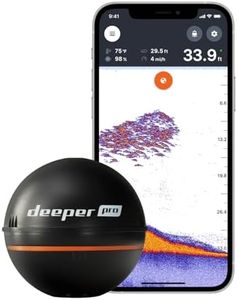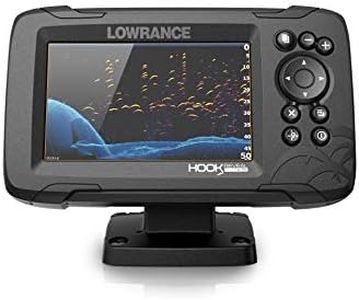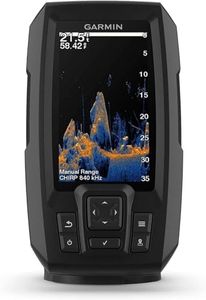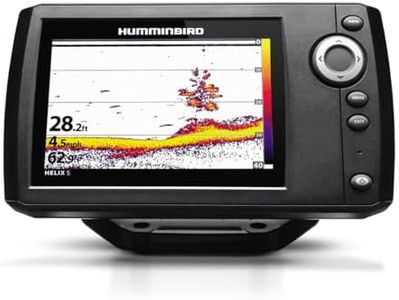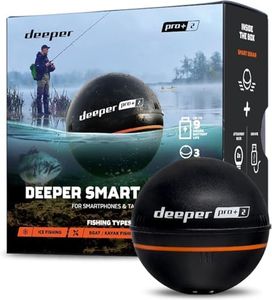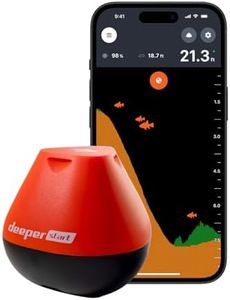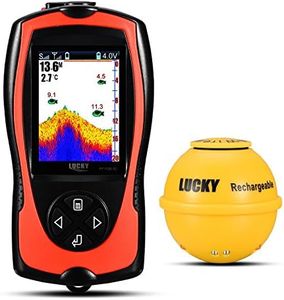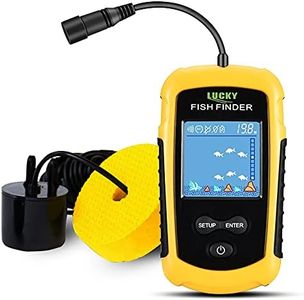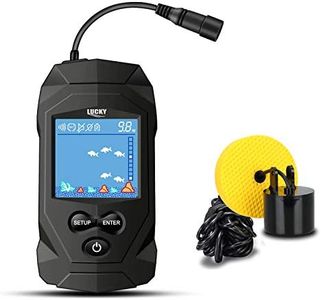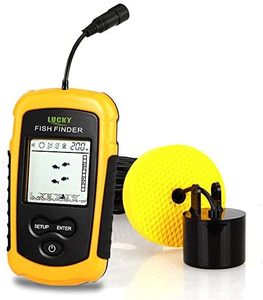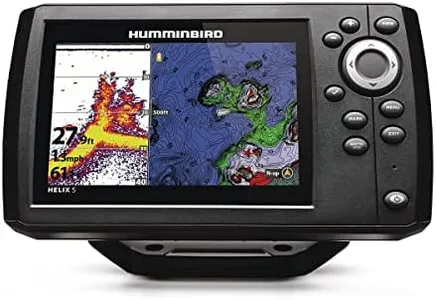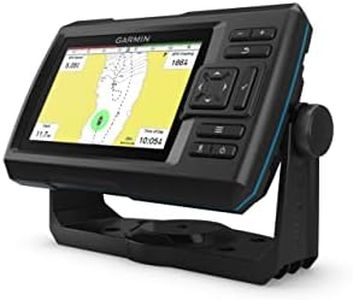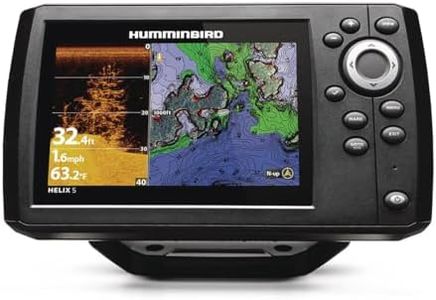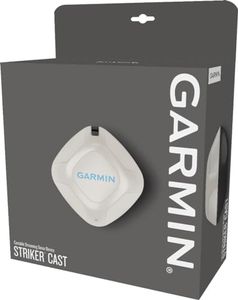We Use CookiesWe use cookies to enhance the security, performance,
functionality and for analytical and promotional activities. By continuing to browse this site you
are agreeing to our privacy policy
10 Best Kayak Fish Finders
From leading brands and best sellers available on the web.Buying Guide for the Best Kayak Fish Finders
Choosing the right fish finder for your kayak can make your fishing trips much more successful and enjoyable. Fish finders are electronic devices that use sonar technology to help you locate fish and understand the underwater environment. When picking a fish finder for kayaking, it's important to focus on key features that match your fishing style, kayak setup, and comfort level with technology. Consider where, how often, and in what kind of waters you'll be using your kayak, as these factors should shape your selection of the essential specifications.Screen Size and ResolutionScreen size refers to the physical measurement of the display, while resolution describes how detailed and sharp the image appears. A larger, higher-resolution screen makes it easier to see fish, structure, and depth readings, especially in bright sunlight or when you need to interpret detailed data. If you want something compact for a small kayak, a screen around 4 inches is common, while larger kayaks or those who prioritize visibility might choose 5 inches or more. Higher resolution is always easier on the eyes, but even basic units can be effective for beginners. Choose a screen size that is easily visible from your seat and fits comfortably in your kayak setup.
Transducer TypeThe transducer is the part of the fish finder that sends and receives sonar signals under water. There are different types of transducers, such as single beam, dual beam, CHIRP, and side/down imaging. Single and dual beam transducers are usually enough for beginners, showing a simple image of what’s under your kayak. CHIRP technology and side/down imaging provide much more detail, helping you identify fish and underwater objects with greater accuracy. For most casual kayakers, a basic transducer works well, but if you fish in complex underwater areas or want more specific information, advanced options are better.
Portability and Mounting OptionsSince space on a kayak is limited, a fish finder should be easy to install, remove, and mount securely. Portability refers to how easily the device can be moved or used with minimal setup, while mounting options are about how it attaches to your kayak. Some fish finders are designed to be handheld or use suction mounts, while others have specialized brackets that fit into kayak mounting systems. If you switch kayaks or want to travel light, look for portable models. If you want a permanent setup, check that the mounting hardware is compatible with your kayak.
Power Source and Battery LifeFish finders require a power source to work, usually a battery. Battery life determines how long the device can run before it needs to be recharged or have batteries replaced. Small, portable fish finders often run on AA batteries or a rechargeable pack, which can be convenient for short trips. Larger units might need a bigger 12V battery for all-day use. If you mostly fish for a few hours at a time, a compact battery is sufficient. If you spend long days on the water or want higher performance, choose a device with greater battery capacity.
Waterproofing and DurabilityKayak fishing exposes electronics to water, bumps, and rough conditions, so a fish finder needs to be waterproof or at least highly water-resistant and generally robust. Waterproofing is measured by IP ratings; a higher number means better protection. For occasional light splashes, basic water resistance is enough, but for regular fishing—and especially saltwater—choose a model with strong waterproofing and a rugged build to prevent damage.
Depth and Range CapabilitiesDepth capability means how deep the fish finder can accurately read underwater, while range relates to how far it can detect fish or structures from the kayak. In shallow lakes, ponds, or rivers, most basic fish finders are sufficient because you don’t need to scan very deep. If you’re fishing in deeper reservoirs or coastal waters, make sure the depth rating matches your fishing spots. Understanding your typical fishing environment is the best way to decide which capabilities are necessary.
